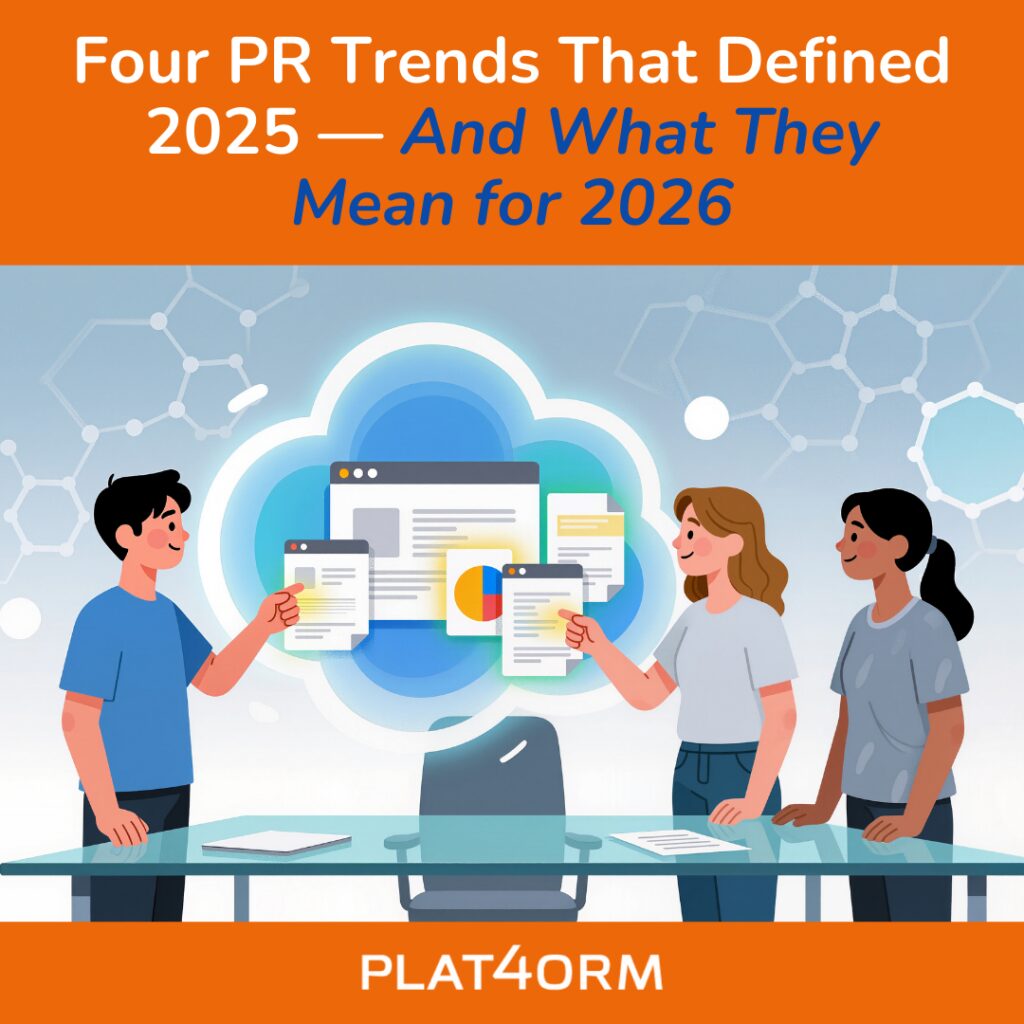
When trying to connect with clients, it’s critical to understand their issues and meet them where they are. But how do you shape your message when you’re targeting several audiences at once – and they’re all part of the same organization? The audiences in question are your client “personas”. Ideal client persona profiles are the cornerstore to successful sales and marketing.
Plat4orm recently hosted a panel of legal and tech marketing experts to talk about compliance, privacy and framing your message in a fast-changing environment. I was privileged to moderate the group of talented communications pros: Joy Murao of ACEDS, communications consultant Manoo Razavi, EDRM chief Mary Mack and marketing agency principal Nicki Benvenuti. The lively discussion explored how marketers have to shift their messaging to ensure it lands, especially now that technology is changing in unexpected ways.
One of the biggest challenges marketers face in connecting with clients is understanding the different personas of the people they’re marketing to. It’s not always obvious: Sometimes, the person you think you’re addressing might not be the person who actually needs to use your product or service – or even the person who will write the check to purchase it.
“You have to ask, ‘Who’s actually being bothered?’ ‘Who can’t sleep at night because of a problem?’” says Joy. “It’s not just executive management who’s going to approve the purchases, who’s going to use the product. It’s the person who’s dealing with not having enough staff, who’s been told they need to cut 10% – and they want to know, “How am I going to do that?’”
Hopefully, it’s your product or service that solves their problem. But tailoring your message so different stakeholders understand that can be tricky. How you frame your sales pitch is critical.
Creating a persona
Begin by identifying the different personas you believe you’ll need to reach at an organization by using historical data, Nicki advises. They may be end users, decision makers or IT support staff. Sift through the products or services you know they’ve used, recall any previous encounters you’ve had with their personnel, and try to determine what that company’s pain points are. Are they unique? Do you have use cases that you can show them to demonstrate how your product or service solved a similar problem?
Next, turn to your market research, says Minoo. If you don’t have funds for formal focus groups, talking with user groups about what they like or dislike about your product or service and what they value most can help inform your approach.
Once you have a solid picture of your users and their needs, create journey maps for every single persona you plan to use. Include what you believe are their strongest motivators. “What is getting them to opt in?” asks Nicki. “What are they most likely to engage with?”
And keep testing, she suggests. Each client persona deserves as much personalization as possible. Which pathway did they come in on – in-person outreach or through a webinar or landing page? Is their problem a familiar one or a new one? Are they asking for that white paper or your corporate newsletter to learn more, or are they only interested in getting their issue fixed? Each pathway presents an opportunity to tailor your approach to their needs.
Getting to ‘Yes’
Use your journey maps to guide you during your encounter with the client, but listen very carefully, making sure you understand their issues. Leave time to have substantive conversations about their problems so they know you’re truly concerned about the issues; then mirror them back to the client to show you get it.
For instance, the person worried about how they can cut 10% off their workflow might need a clear-cut example of exactly how your product can help them do that. Keep the focus on their specific issue. You need to show them, says Joy, that you can “help them stop reviewing 6,000 documents so they only have to review 800.”
It’s also important to be aware of people’s comfort levels when you approach them about your product, the panelists note. Many people really dislike cold calls, preferring instead to have an unstructured initial interaction at a conference or event where they can have a conversation about their needs with no pressure. Those scenarios provide excellent opportunities for you to really learn about a client’s or potential client’s pain points and respond in real time.
Knowing clients’ unease with particular language is critical, too, panelists agree. Legal department personnel might be put off by complex, technical explanations of a tool’s capabilities – they’ll likely prefer to hear how the tool supports more traditional discovery needs such as data collection and sorting for investigations and litigation, or how it helps when responding to requests.
On the other hand, tech stakeholders will likely appreciate it if you discuss the tool’s cutting-edge abilities in detail – the more complex, the better. Their concerns are very different than legal’s, and describing the tool simply to a group of early-adopter IT stakeholders might signal to them that it isn’t mature or sophisticated enough for their needs; your message will fall flat.
And overselling is definitely taboo – especially with attorneys. If you’re over-enthusiastic, lawyers will “shut their mind and it doesn’t work,” says Mary. Facts or measured descriptions of a product’s or service’s advantages will fall on more willing legal ears than hype, she notes.
Learn to pivot
“Nuances for each of those audiences is very much a dance,” Minoo says. To best reach multiple stakeholders at an organization, try to have private one-on-one conversations or presentations about your product or service so that you can address each group’s particular concerns without alienating anyone.
Sometimes, your product or service won’t entirely solve a client’s issue – but this is an opportunity, too. If there are tangential areas where you could partner with another provider to truly solve a client problem, you can design an ecosystem so that the client’s needs are completely met and the buyer will say, “Yes, I will write that check because you really understand my problem.”
Be mindful, too, that with rapid technology changes a client’s problem can shift more abruptly than in the past. Pain points can morph overnight; so can user personas. Check in often to make sure your personas are still responsive to clients’ needs.
After all, that’s why you develop personas in the first place – to help you understand the best way to solve your client’s issue. Many marketers and salespeople “sell to sell instead of selling to provide value,” notes Minoo – like when they push the newest version of a product without checking to see if it actually helps a client solve an existing problem. “But there are multiple stakeholders with multiple different personas involved. Just because one of your personas or marketing playbooks works for the data protection officer does not mean that (it works for) another stakeholder (with) different concerns.”
Here at Plat4orm, we specialize in the deep dives necessary to help you deliver your message with just the right approach – and we get results. To learn more about how Plat4orm can help you, visit us at Home – Plat4orm.

